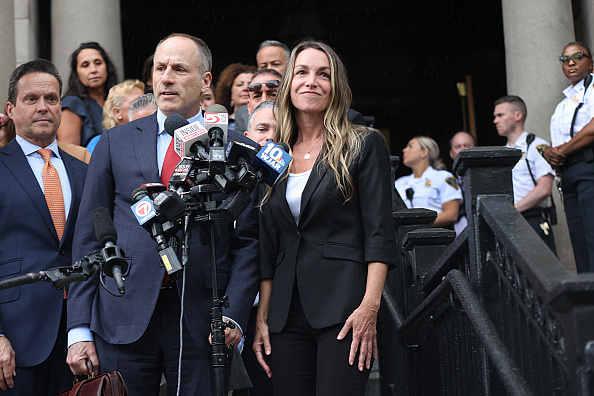The Karen Read Trial: An Analysis of Defense Strategies in True Crime
The ongoing Karen Read trial has garnered significant public attention, particularly following the release of the Max docuseries, A Body in the Snow: which aired just weeks before her retrial. This five-part series delves into the events of January 29, 2022, when Read discovered her then-boyfriend, Boston police officer John O’Keefe, unresponsive in a snowbank after a night of socializing with friends.
Background and Circumstances
On that fateful night, Read had dropped O’Keefe off at a residence where he intended to meet friends. However, witnesses reported that he never made it inside. Allegations surfaced that Read admitted to hitting O’Keefe with her vehicle, which had a damaged taillight that the prosecution linked to the incident. In her defense, Read has maintained a different narrative, employing the SODDI (Some Other Dude Did It) defense, a tactic often used to shift suspicion onto an alternative suspect.
Trial Dynamics and Defense Strategy
The initial trial in 2024 ended in a mistrial due to a hung jury, leaving many questions about the effectiveness of the defense strategy employed. The SODDI defense, while a legitimate legal approach, may have diverted the jury’s focus from the prosecution’s burden of proof to speculative theories of conspiracy against Read.
Challenges of Media Exposure
One of the most striking aspects of Read’s situation is her participation in the docuseries, which raises questions about the implications of media exposure during an ongoing trial. Given that she did not testify in her first trial, her presence in the documentary may have unintended consequences. Critics argue that Read’s demeanor and commentary lack the emotional gravitas typically expected from a defendant in a murder trial. This concern about public perception is particularly pronounced when considering the impact of her statements on the jury’s view of her character.
Emotional Impact and Public Perception
Criminal defendants often fall into two categories when they testify: sympathetic or defensively indignant. In Read’s case, the emotional response expected from her, especially considering her relationship with O’Keefe, appears muted. Many viewers noted an absence of visible sorrow or concern over his tragic death, which could hinder her defense. Her portrayal in the docuseries presents her as more focused on her public image than on expressing remorse—characteristics that could potentially alienate jurors.
The Stakes of Retrial
As the retrial progresses, the defense is faced with a daunting challenge. If the prosecution’s case stands strong, they have the opportunity to fortify their arguments based on lessons learned from the previous trial. The documentary provides an insightful look into the difficulties of defense work in high-profile cases, exposing vulnerabilities that the prosecution can exploit. For defense attorneys, this scenario underscores the importance of not only crafting a compelling narrative but also addressing potential weaknesses before they can be highlighted by the opposing side.
Conclusion
The ongoing situation surrounding Karen Read is a poignant example of the complexities involved in criminal defense, especially in a media-saturated environment. As we watch the trial unfold, it serves as a reminder of the interplay between public perception and legal strategy. The outcome remains uncertain, but the implications of the decisions made by both the defense and prosecution in this case will undoubtedly influence future legal proceedings.
Adam R. Banner
Adam R. Banner is the founder and lead attorney of the Oklahoma Legal Group, specializing in state and federal criminal defense in Oklahoma City. His practice encompasses a range of allegations, including sex crimes, violent crimes, drug offenses, and white-collar crimes. This article aims to illuminate the intersection of law and popular culture as it pertains to ongoing legal matters.

